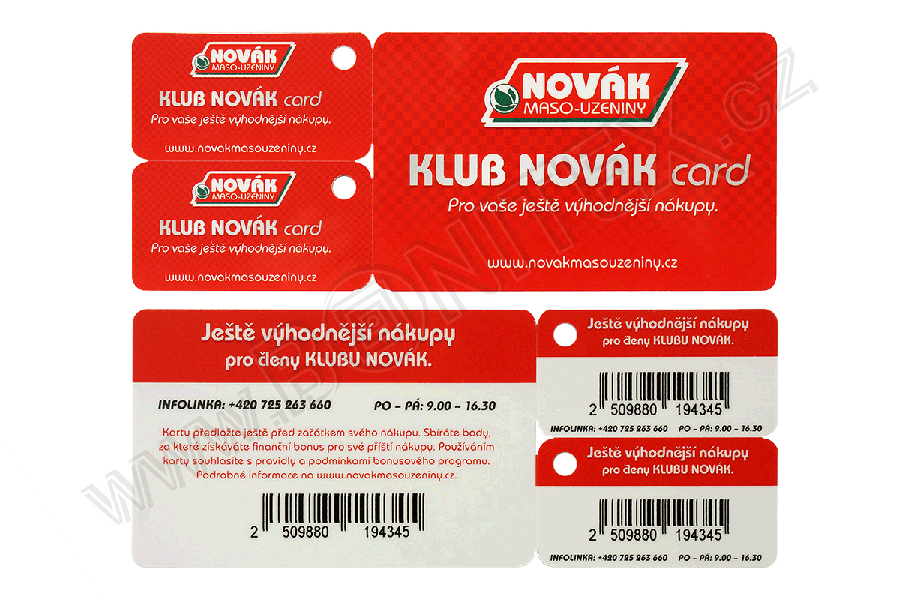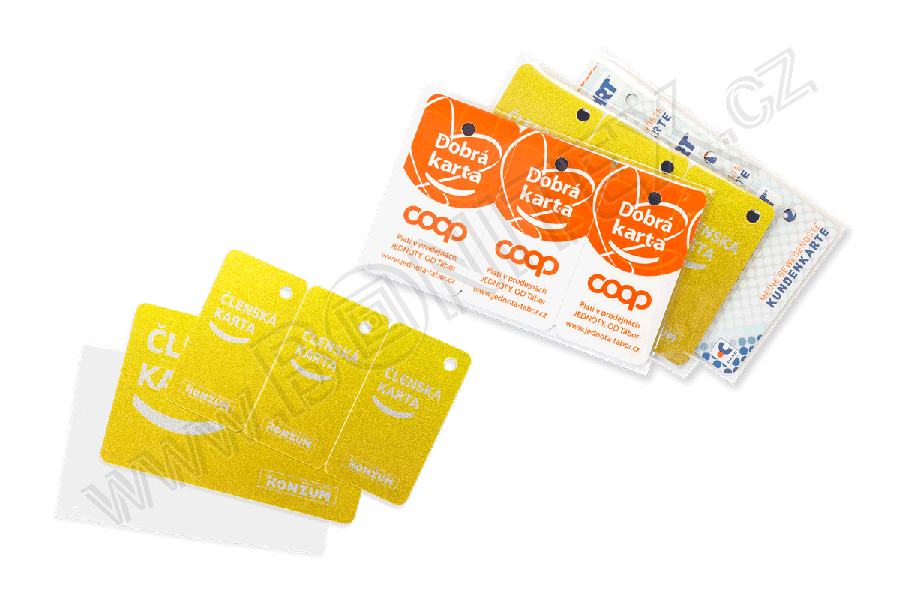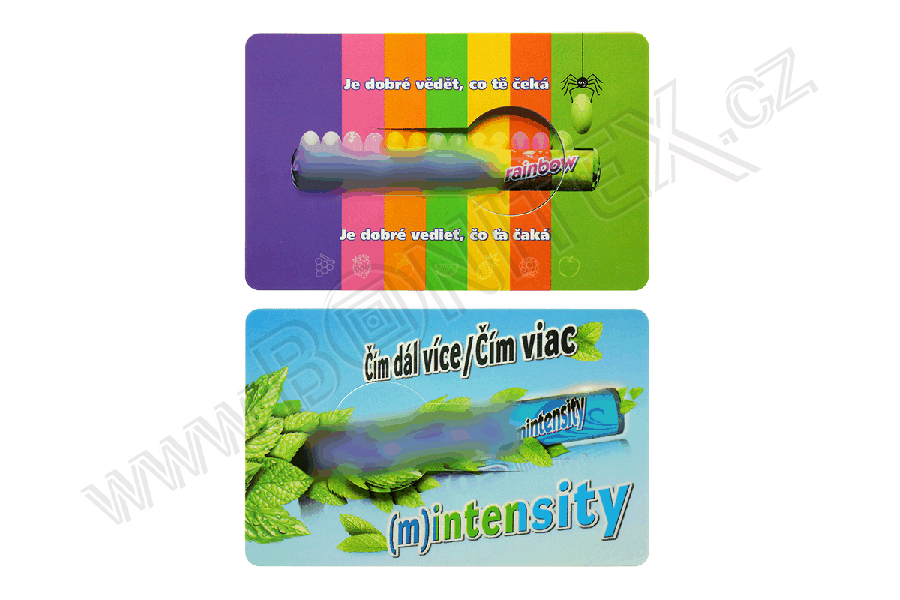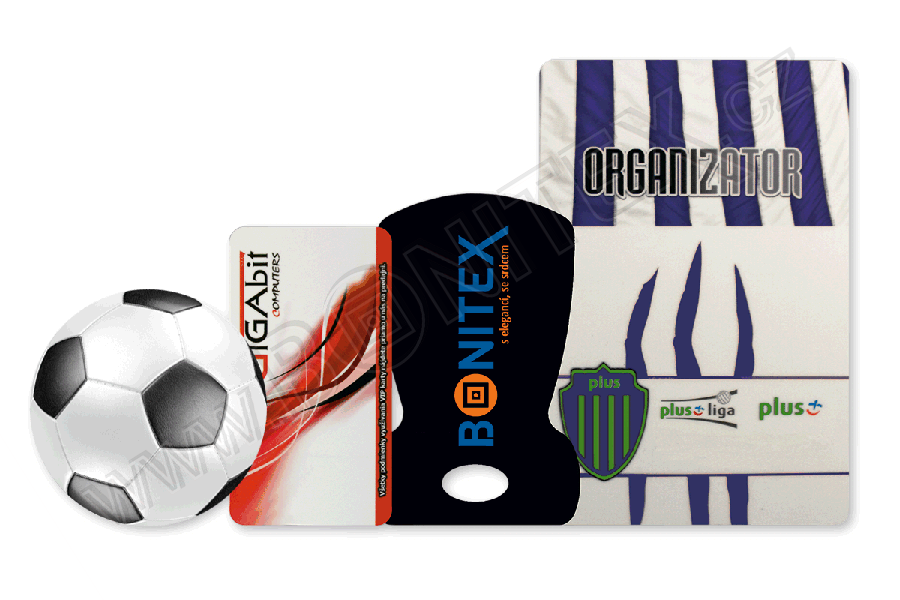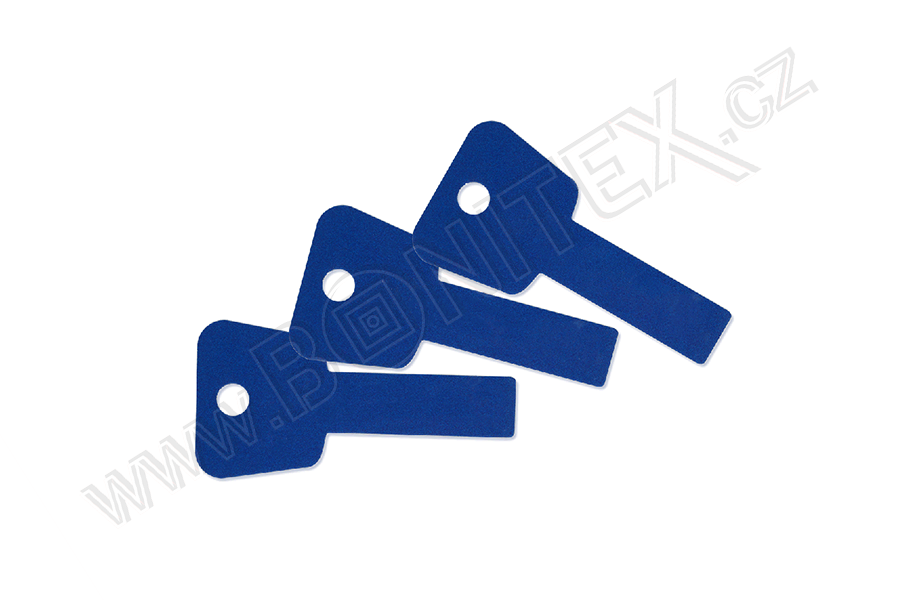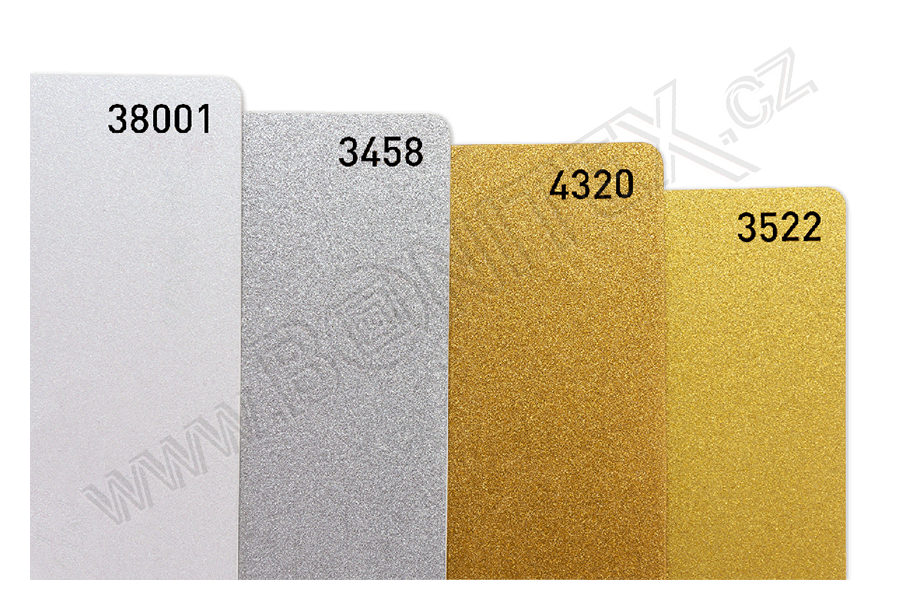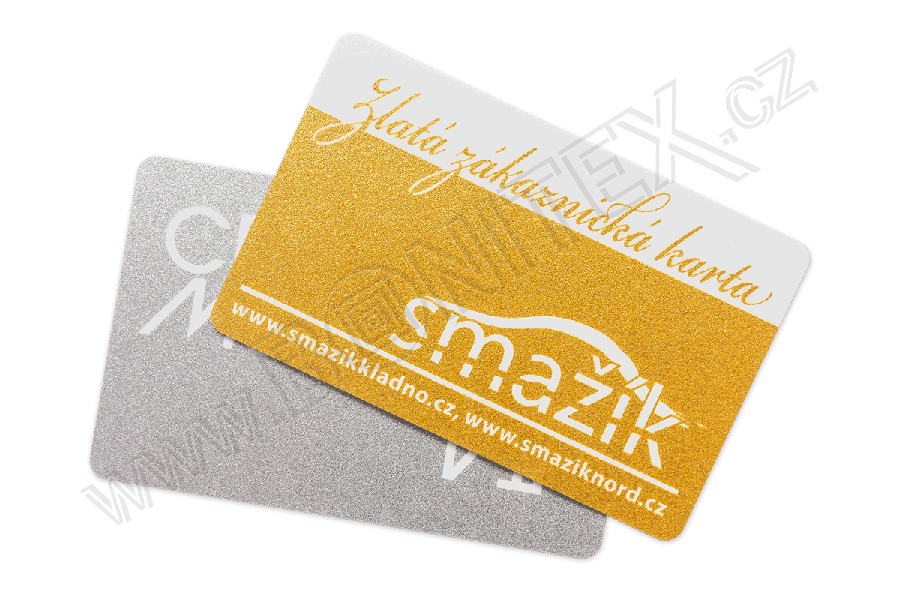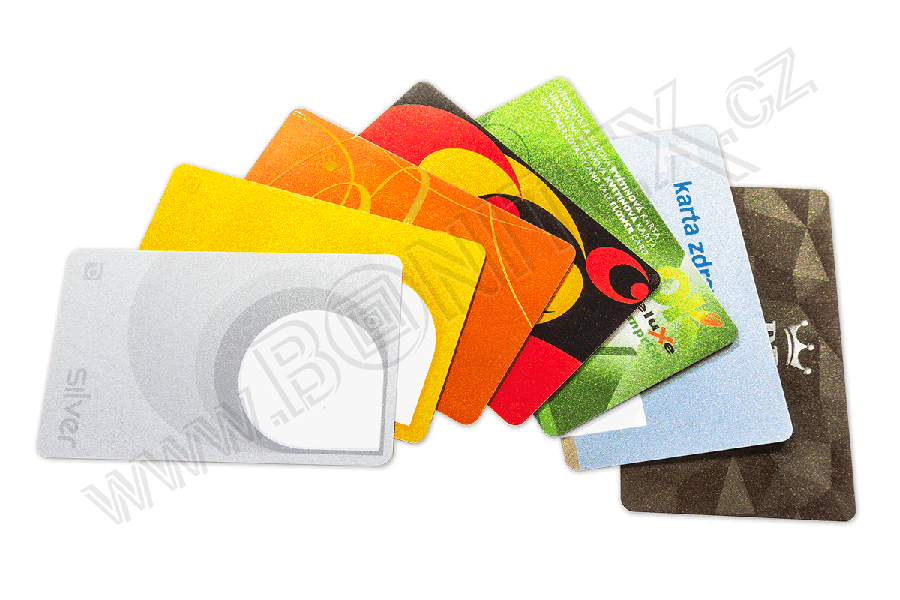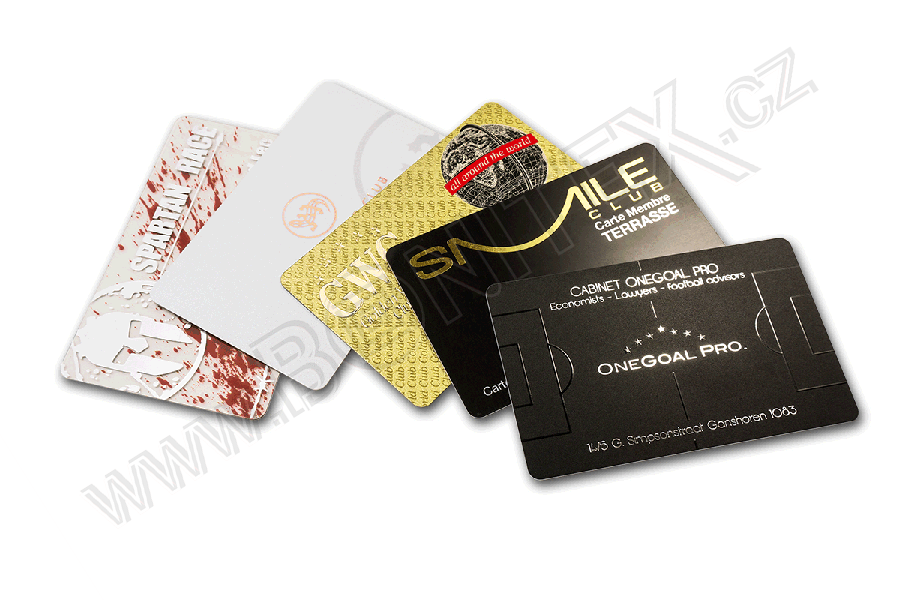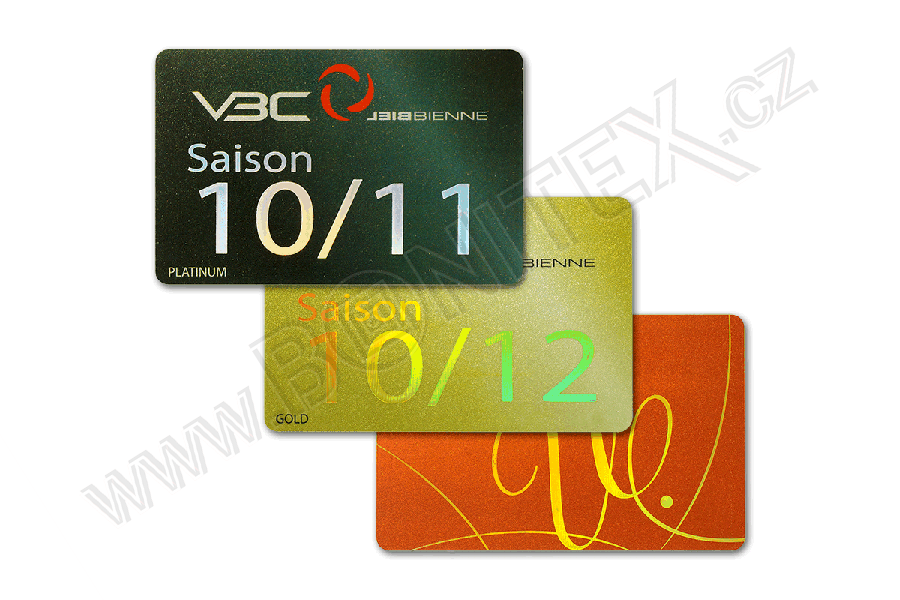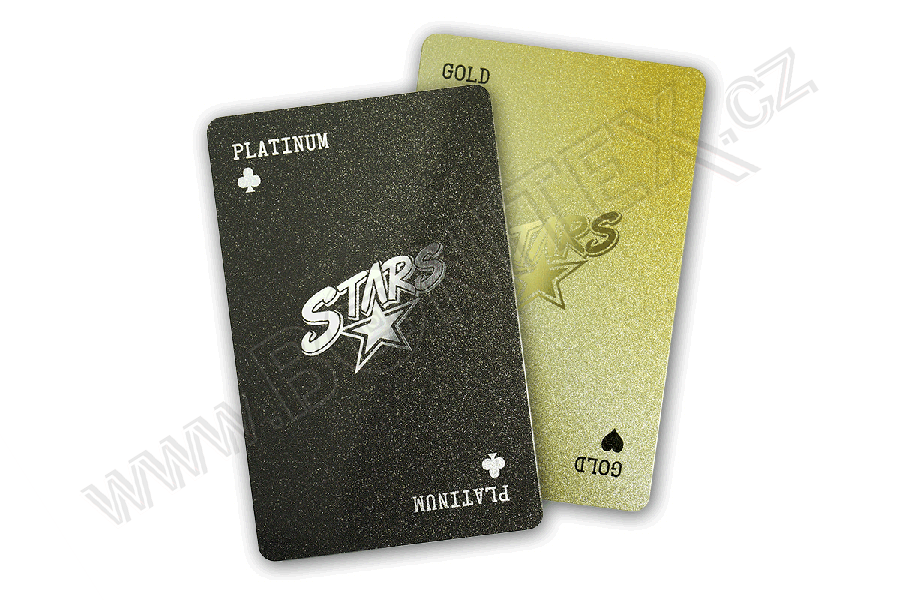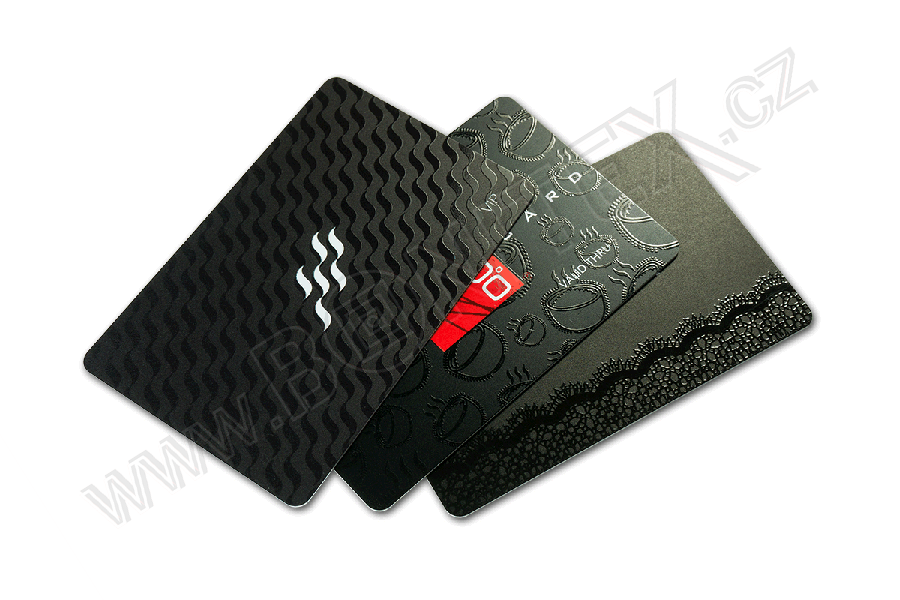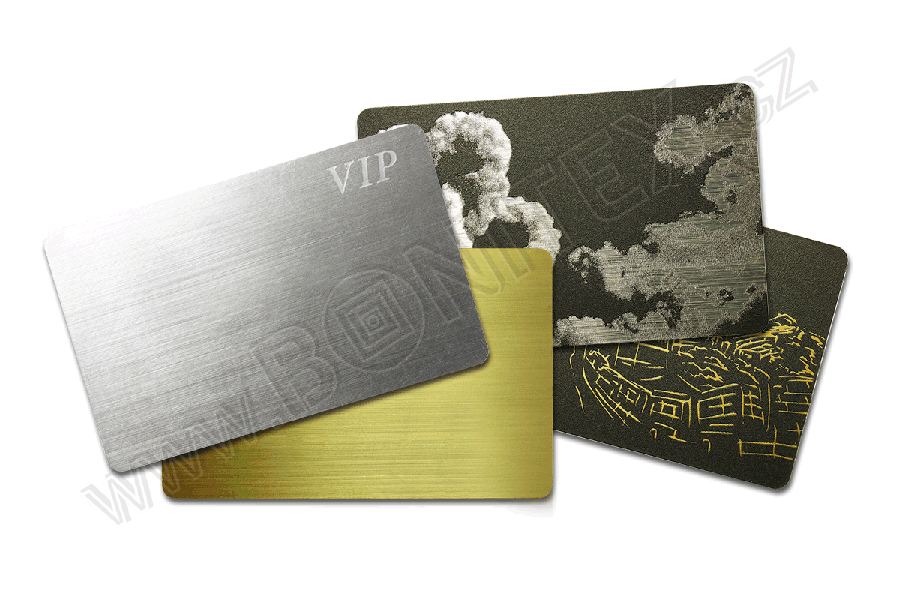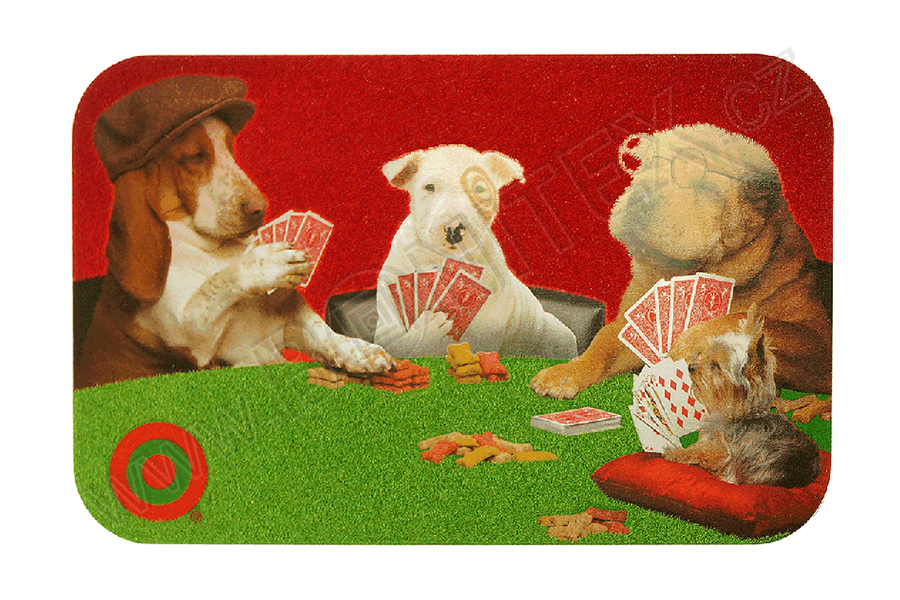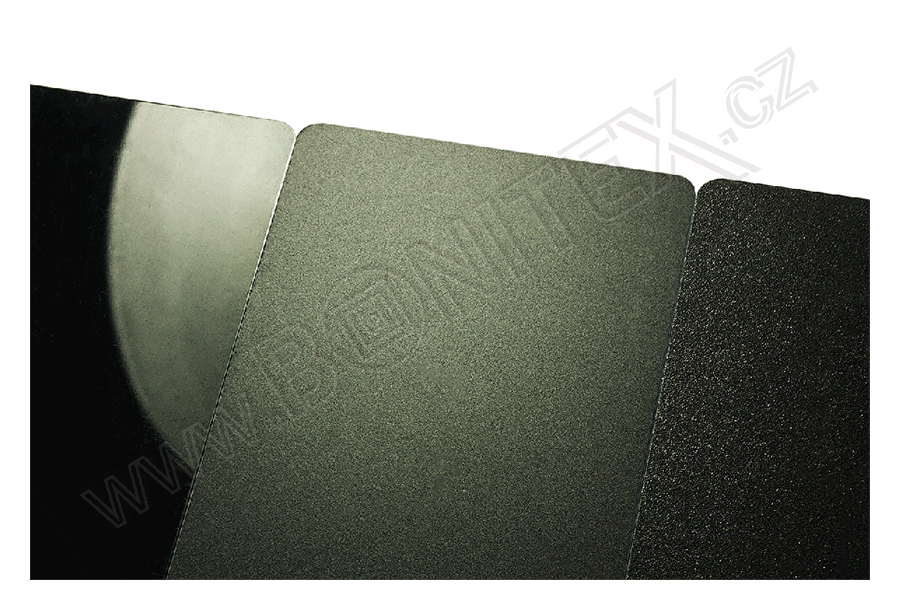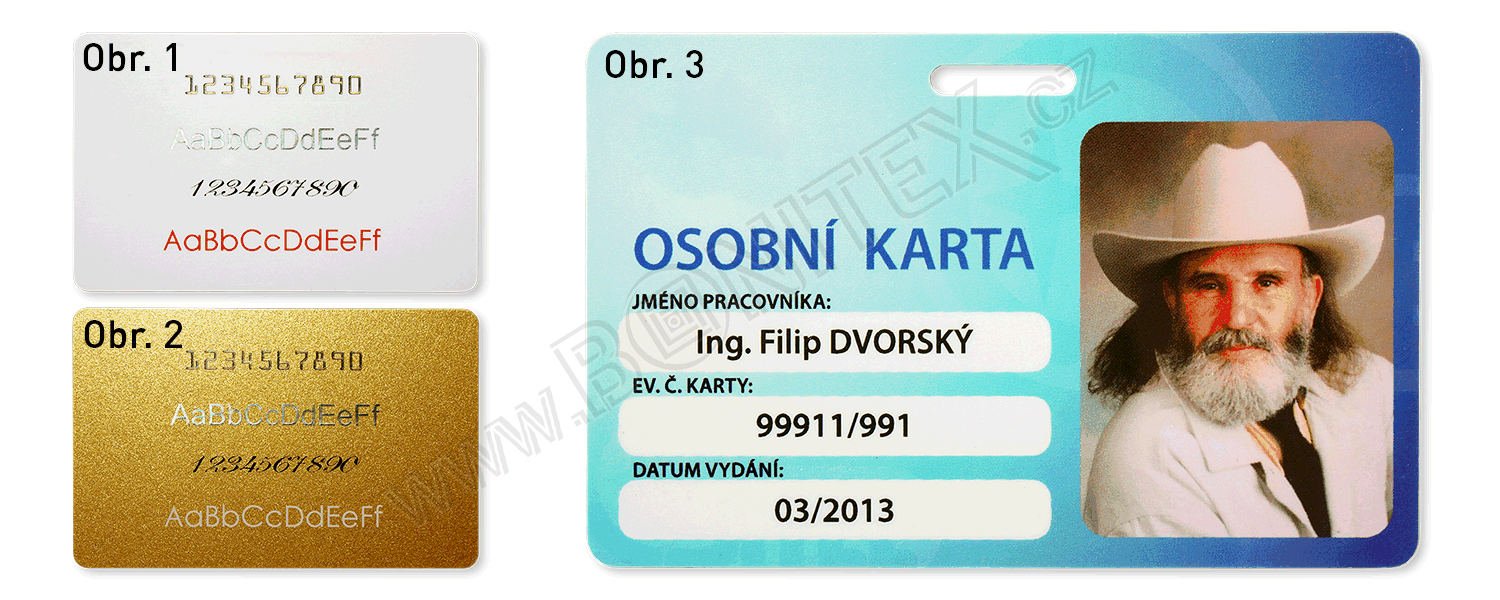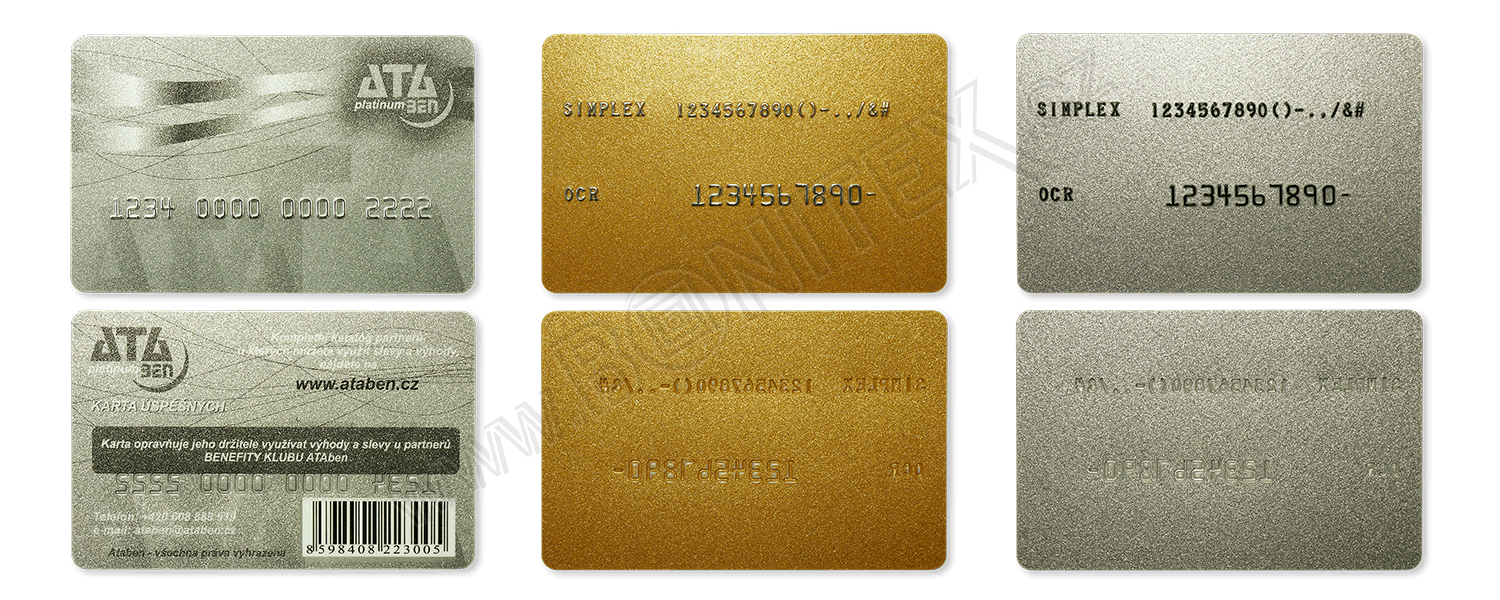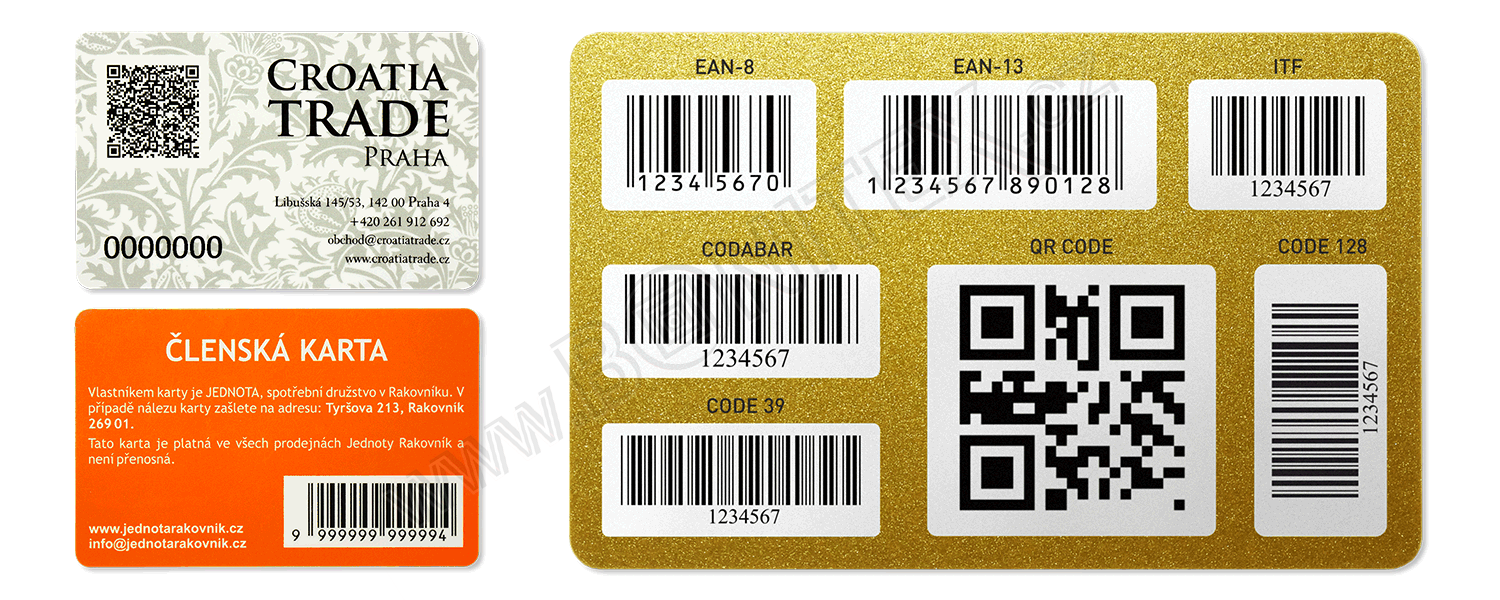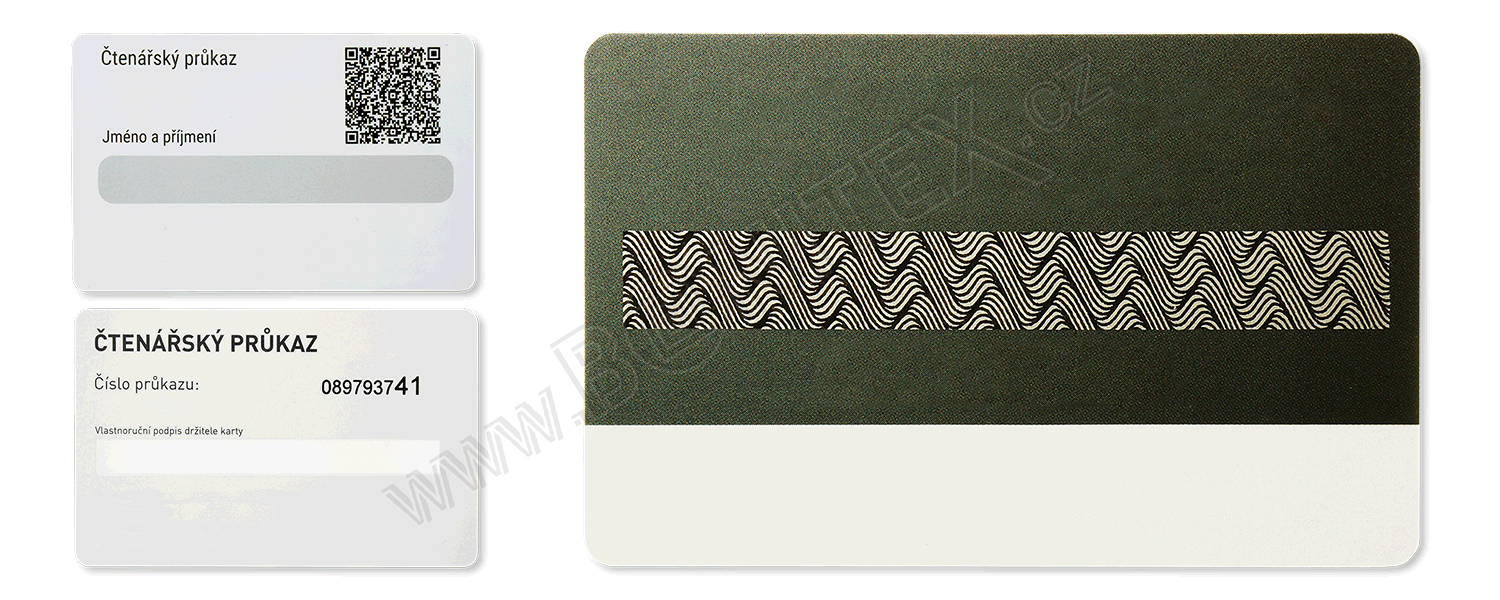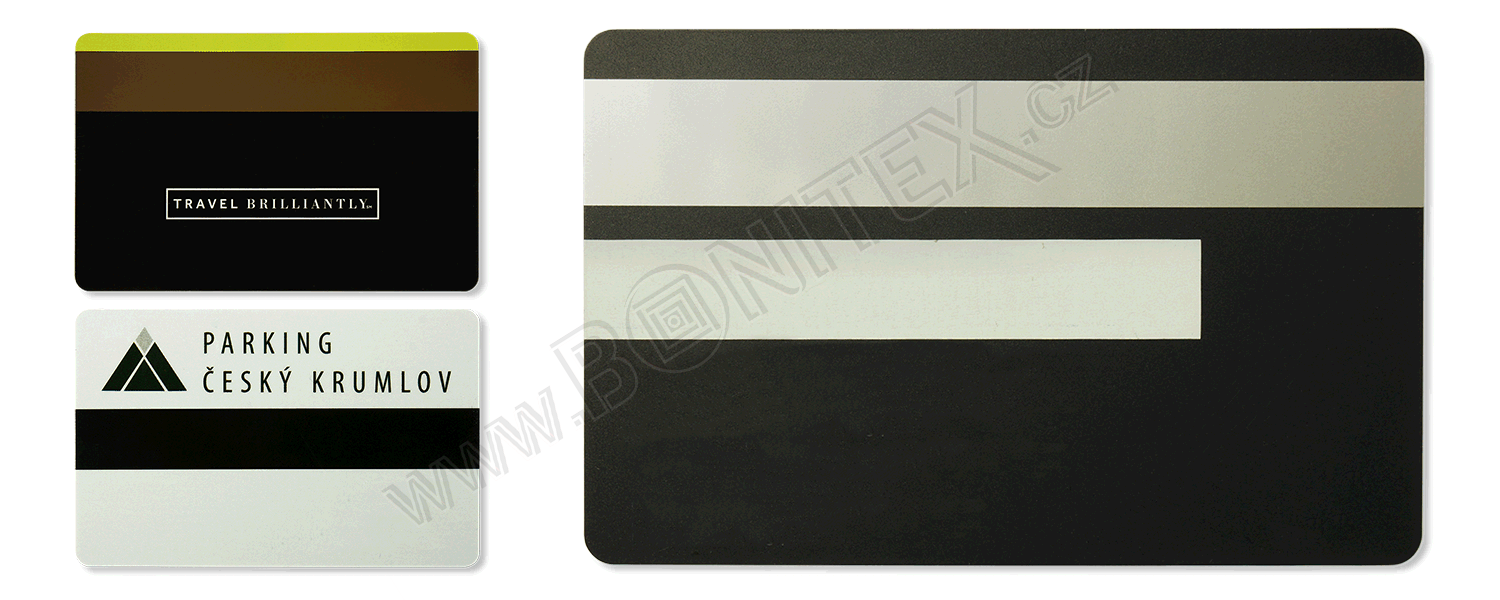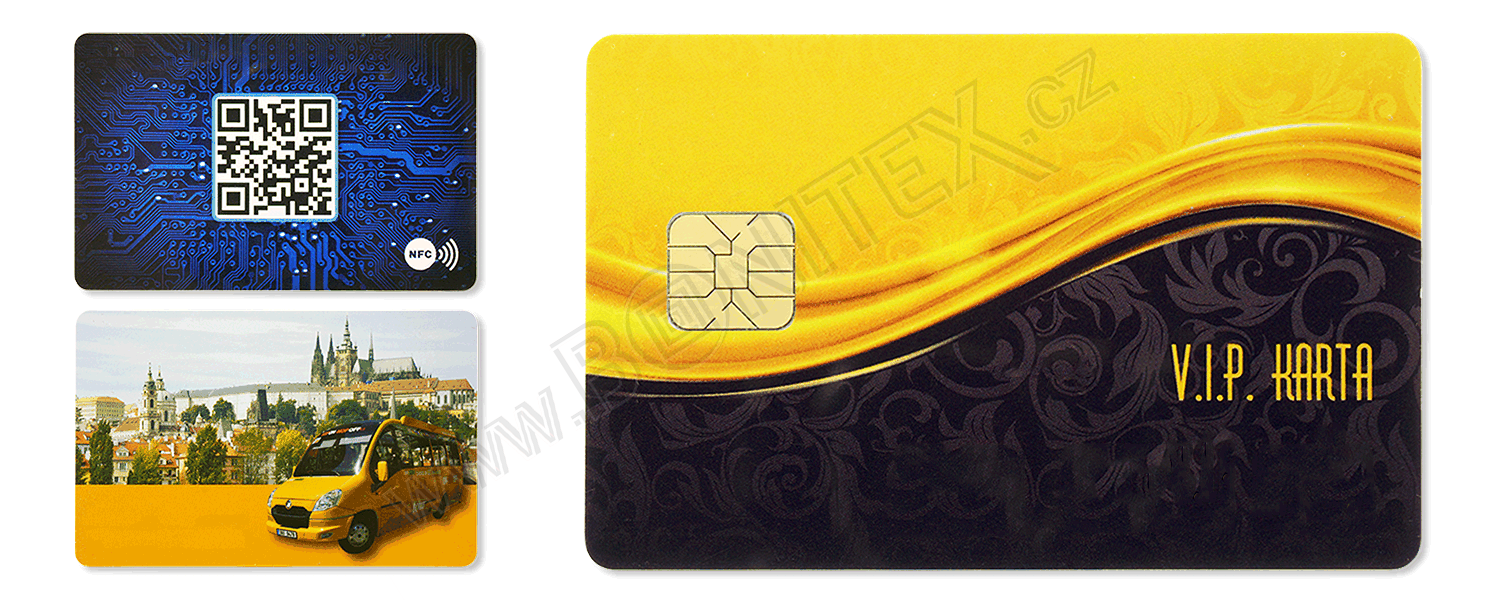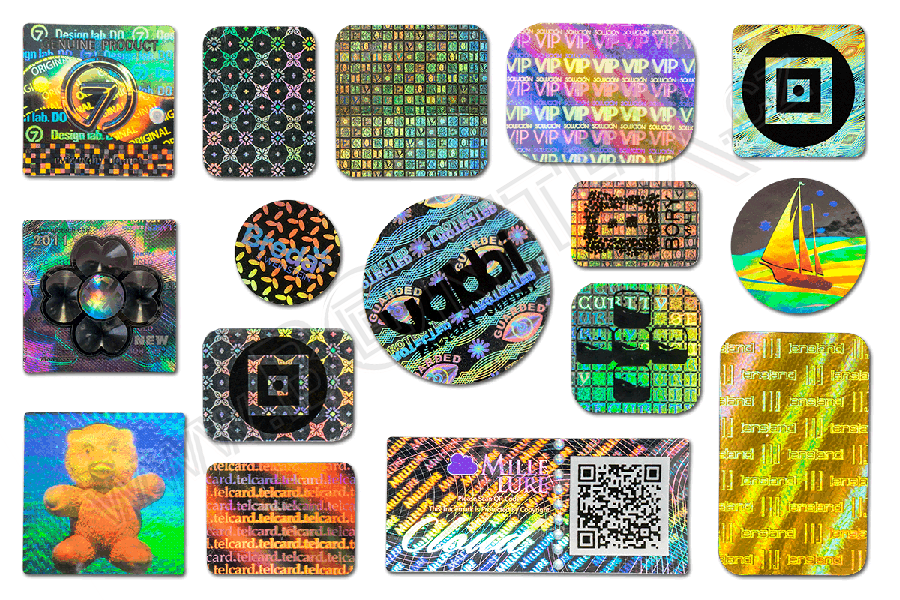xxxCards - Technical & Manufacturing Details
Below are specific examples of card types we produce, including shape variations, surface finishes, metallic/special coatings, customization options, and security features available for your or your clients' card projects.
Examples of several product variants based on shapes and dimensions:
1. CR-80 Card with Two Detachable Key Fobs - V1
A standard credit-card sized (CR-80) card featuring two breakaway mini-cards with keyring holes.
-
Dimensions:
- Full card: 139.6 × 54 mm
- Key fobs: 54 × 28.5 mm
- Thickness: Customizable
-
Material: PVC
-
Technology:
- 4/4 CMYK offset printing
- Gloss lamination (1/1)
-
Customization: 3× EAN-13 barcodes
-
Optional: RFID/NFC chips embeddable in main card + both fobs
CR-80 Card with Additional CR-80 Card (Breakable into 3 Key Fobs)
-
Dimensions:
- Cards: 2 × 85.6 × 54 mm
- Key fob: 54 × 28.5 mm
- Thickness: Customizable
-
Material: PVC
-
Technology:
- Gold metallization (screen printing)
- 4/4 CMYK offset printing
- Gloss lamination (1/1)
-
Customization: 4× EAN-13 barcodes
-
Optional: RFID/NFC chips in all 3 fobs
CR-80 Card with "Shopping Cart Token" Die-Cut
-
Dimensions: 85.6 × 54 × 0.76 mm
-
Material: PVC
-
Technology:
- 4/4 CMYK offset printing
- Gloss lamination (1/1)
- 3-sided die-cut (token remains attached on 4th side)
-
Optional: RFID/NFC chip integration
CR-80 Card with Custom Corner Rounding
Standard credit-card sized (CR-80) or any other rectangular/square dimensions with non-standard corner radii.
- Standard CR-80 corners: 3.18mm radius (ISO compliant)
- Custom options:
• Example 1: 1× 20mm radius + 3× standard 3.18mm
• Example 2: 2× 20mm radius + 2× standard 3.18mm
• Example 3: 4× 8mm radius
Karty s atypickým výsekem - několik variant řešení
Nearly any shape possible (up to 305 × 457mm), limited only by creativity and physical constraints.
- Sample client implementations shown
- All shapes compatible with RFID/NFC chip embedding
Surface Finishes & Effects
Your cards can be enhanced with many additional effects that increase their utility value, such as:
Sparkle Effects - Base Variants
For an enhanced card design, you can choose from various metallic or pearlescent glitter effects, applied using screen printing:
- Pearl (38001): Ideal with CMYK overprint
- Silver Metallization (3458): Works with CMYK
- Gold Metallization (4320/3522): Note: Significantly affects color reproduction when overprinted
Partial Metallic/Pearl Coatings
Metallic (or pearlescent) finishes can also be applied to cards only partially.
- However, we strongly advise against using them in areas intended for subsequent personalization, such as barcodes, as this could compromise readability.
Offset-Printed Sparkle Effects
- Base layers: Silver/gold metallization or pearl
- CMYK/Pantone overprinting creates:
- Gold effects (yellow-brown tones on silver/pearl)
- Custom sparkle colors (bronze, platinum, orange, green, purple, etc.)
Hot Stamping
"Stamp" technology for transferring glossy metallic designs (logos, effects, text) onto cards using heat.
- Requires custom dies (increases cost for small batches)
- High-quality, durable results
- Standard foils: Gold/Silver
- Specialty options:
• Bronze/Red/Green
• Iridescent (color-shifting)
• Holographic
Hot Laser
Laser technology for metallic design transfer without dies.
- No die needed (cost-effective for prototypes)
- Precision detailing (fine line capability)
- Foil options match hot stamping
Metallic Thermal Print
Lower-cost alternative with trade-offs:
- Reduced durability/precision vs. hot methods
- Ideal for:
• Serial numbers
• Text strings - Same foil color options available
UV Varnishing
- Matte/Frost laminate + Gloss UV
- Gloss laminate + Matte UV
- Spot UV (design accents)
- Full-surface (added abrasion resistance)
The varnish can be applied either partially (any design pattern across the card surface) or as full coverage (providing additional protection against mechanical wear).
Wire-Drawing Effect
Premium metallic surface mimicking brushed metal:
- Best paired with:
• Screen printing
• Laser engraving
• Hot stamping - Color options: Gold/Silver
Suede Effect
This effect incorporates multi-colored microfibers applied to the card surface, creating a luxurious suede-like texture.
-
Limitations:
• Non-laminatable
• Restricted personalization
Lamination Options
-
Gloss (standard, most commonly used variant)
-
Matte (highly elegant for black, pearlescent, or metallic backgrounds, as well as transparent plastic cards)
-
Frosted (a premium matte lamination with a coarser texture resembling frost on glass. When combined with thoughtful card design and other elements, this effect can appear highly sophisticated)
-
Combined (e.g., matte front / gloss back, etc.)
Product Personalization Options:
Flat Personalization & Photography
We implement numeric, text, or alphanumeric data using:
- Thermal Transfer Printing
Base colors: Black, White, Metallic Gold/Silver
Fig.1: Examples on white card (gold, silver, black, red)
Fig.2: Examples on gold metallized surface
Fig.3: Standard ID card with photo & black text - UV Printing
Primary color: Black (other shades available) - Digital Printing
Any color except white
Embossed (Raised) Personalization
We emboss both small and large characters in the following colors: metallic glossy gold and silver, plus black and white.
- Large characters: Height 4.5 mm, OCR-7A character set, including only digits 0–9 and a hyphen (Fig. 2 and 3).
- Small characters: Height 3 mm, SIMPLEX 2 character set, including digits 0–9, complete uppercase alphabet (without Czech diacritics), and the following symbols: ()-.,/&# (partially shown in Fig. 2 and 3).
- Design considerations: Account for the visible, mirror-reversed embossing indentation on the card’s opposite side, and ensure proper placement of the RFID antenna chip to avoid potential damage.
1D & 2D Barcodes
We recommend using barcodes in black on a white background. However, some readers can reliably decode reversed (white on black) or color-on-color barcodes, provided sufficient contrast is maintained (pre-testing is essential). Supported barcode types:
- EAN8 – Encodes 7 digits (0-9); the 8th character is an auto-calculated checksum.
- EAN13 – Encodes 12 digits (0-9); the 13th character is an auto-calculated checksum.
- Interleaved 2/5 (ITF) – Encodes digits 0-9 only. Automatically prefixes a "0" for odd-digit counts.
- With Mod10, the last digit is a checksum.
- Warning: Increasing character count raises bar density and reduces readability.
- CODABAR – Encodes 0-9, letters A/B/C/D, and 6 symbols:
-+.:/$.- Warning: Increasing character count raises bar density and reduces readability.
- CODE128 – Encodes alphanumeric characters (including lowercase).
- Warning: Increasing character count raises bar density and reduces readability.
- CODE39 – Encodes 0-9, uppercase A-Z, space, and 7 symbols:
*–$%./+.- Warning: Increasing character count raises bar density and reduces readability.
- QR Code – Most widely used 2D code. Encodes all alphanumeric/special characters (case-sensitive).
- Max capacity: 7,089 digits or 4,296 alphanumeric characters.
Signature & Scratch-Off Fields
Signature panel – A special print of any shape/size with a writable surface compatible with standard ballpoint pens.
- Data is extremely difficult to alter (attempts at modification are easily detectable)
- Available in transparent, white, or custom color variants
Scratch-off panel – A specialized opaque overlay that effectively conceals personalized data beneath it.
- Hidden information becomes legible after scratching/removal
- Ideal for temporarily covering PINs, passwords, prize codes, etc.
- Available in two formulations:
- Soft (easy to scratch off)
- Hard (more durable)
Magnetic Stripe
Special programmable magnetic stripe for data encoding/reading. We offer two primary variants with different resistance levels to data corruption or erasure from accidental magnetic field exposure (e.g., magnets, computer hard drives, electric motors, powered transformer coils, etc.).
- LoCo stripe
◦ Lower resistance to magnetic fields
◦ Compatible with HiCo stripe encoders/readers for both writing and reading
◦ Typically brown to dark brown (but black variants exist) - HiCo stripe
◦ Significantly higher resistance to magnetic fields
◦ Warning! NOT compatible with LoCo-specific encoders (read-only with LoCo devices)
◦ Standard black color
Additional options:
- Custom stripe programming service
- Special-order colors available (e.g., silver, gold, or other hues)
- Narrow (2-track) magnetic stripes also offered
Contact & Contactless (RFID/NFC) Chips
The most sophisticated card personalization media are, of course, contact or contactless (RFID/NFC) chips.
-
Beyond embedding a single chip, we also provide multi-chip combinations with other elements, such as:
◦ Contact chip + RFID/NFC chip
◦ Contact chip + 2 different RFID/NFC chips (up to three distinct RFID chips possible)
◦ RFID chip + magnetic stripe (LoCo or HiCo)
◦ Contact chip + 2 different RFID/NFC chips + magnetic stripe (LoCo or HiCo)
[More information HERE]
Security Features:
Holograms
Holograms represent a standard yet highly effective security feature for cards (and other items/printed materials) against counterfeiting and misuse.
- We produce holograms in these variants:
◦ Standard non-personalized - Mass-produced, cost-effective but easier to replicate (lower security functionality)
◦ Standard personalized - Customized via thermal print; more expensive than non-personalized but harder to replicate. Personalization options include gold/silver logos, numeric sequences, etc.
◦ Custom-designed - Tailored to your specifications for superior anti-fraud protection, though relatively costly (especially for small batches under 2,000 cards) - Application methods:
◦ Hot stamping
◦ Single-use adhesive labels (destructive upon removal attempt) - Base foil colors: Silver, gold, copper, or transparent

 Čeština
Čeština
 Slovenčina
Slovenčina
 Polski
Polski
 Deutsch
Deutsch
